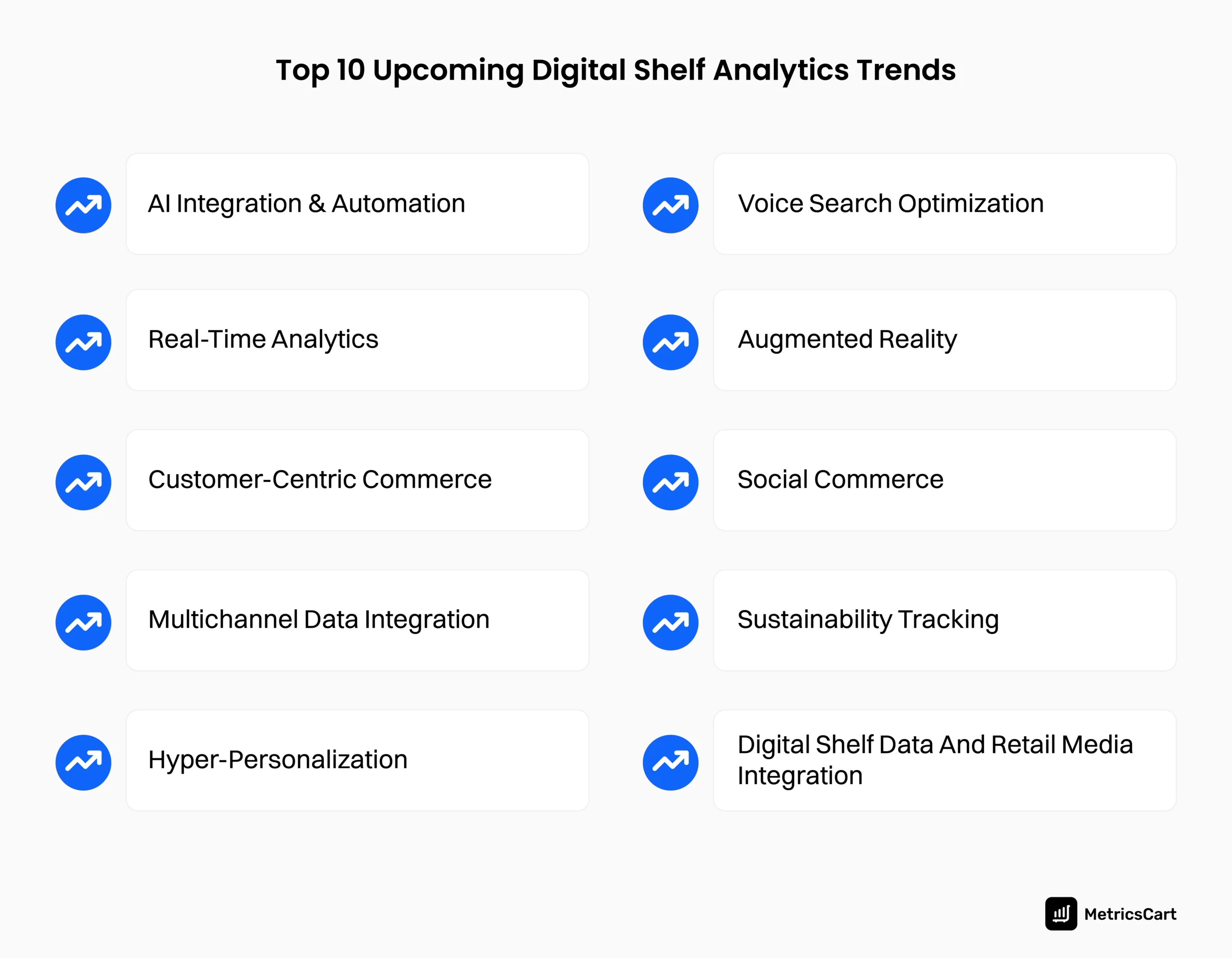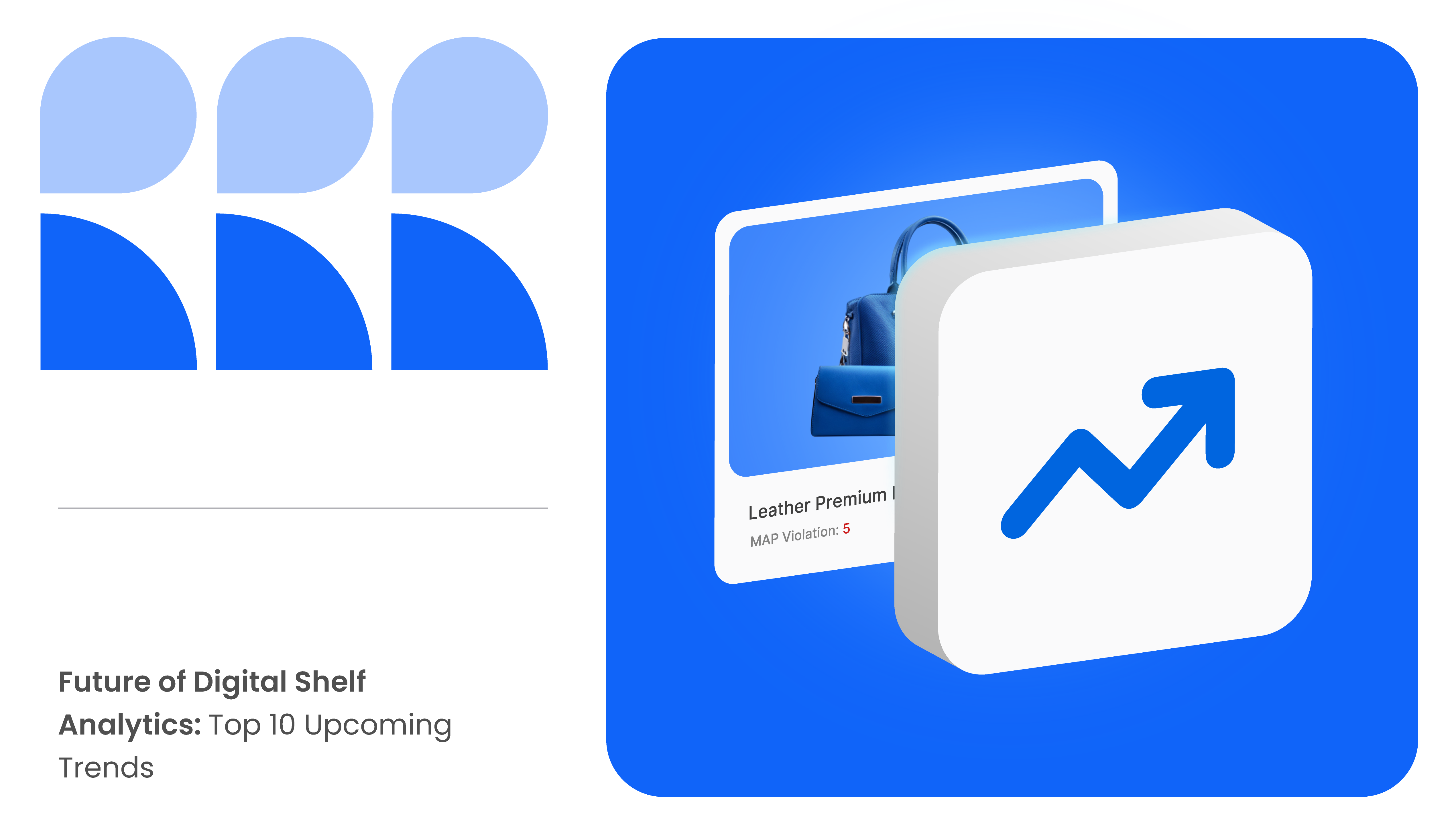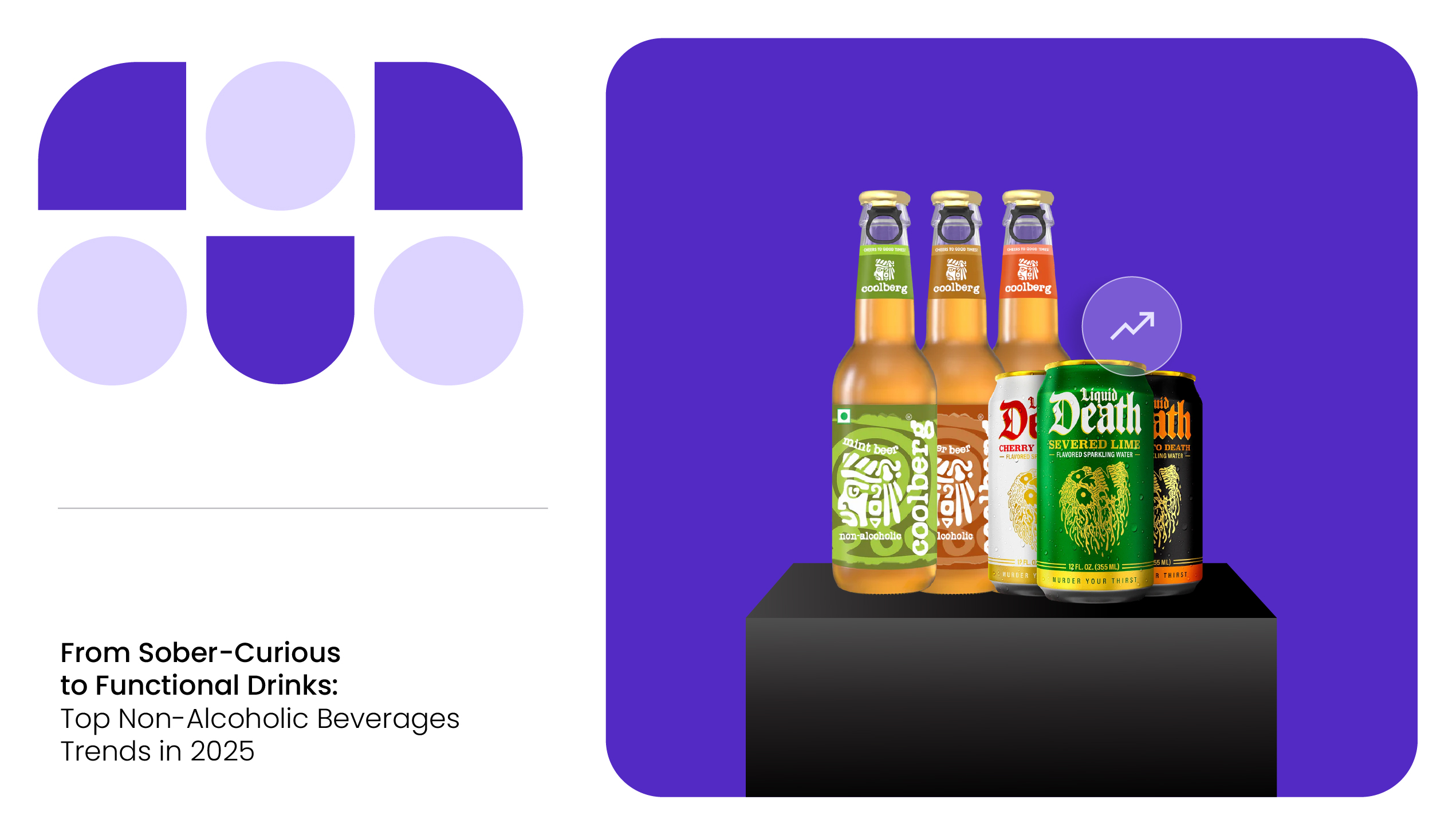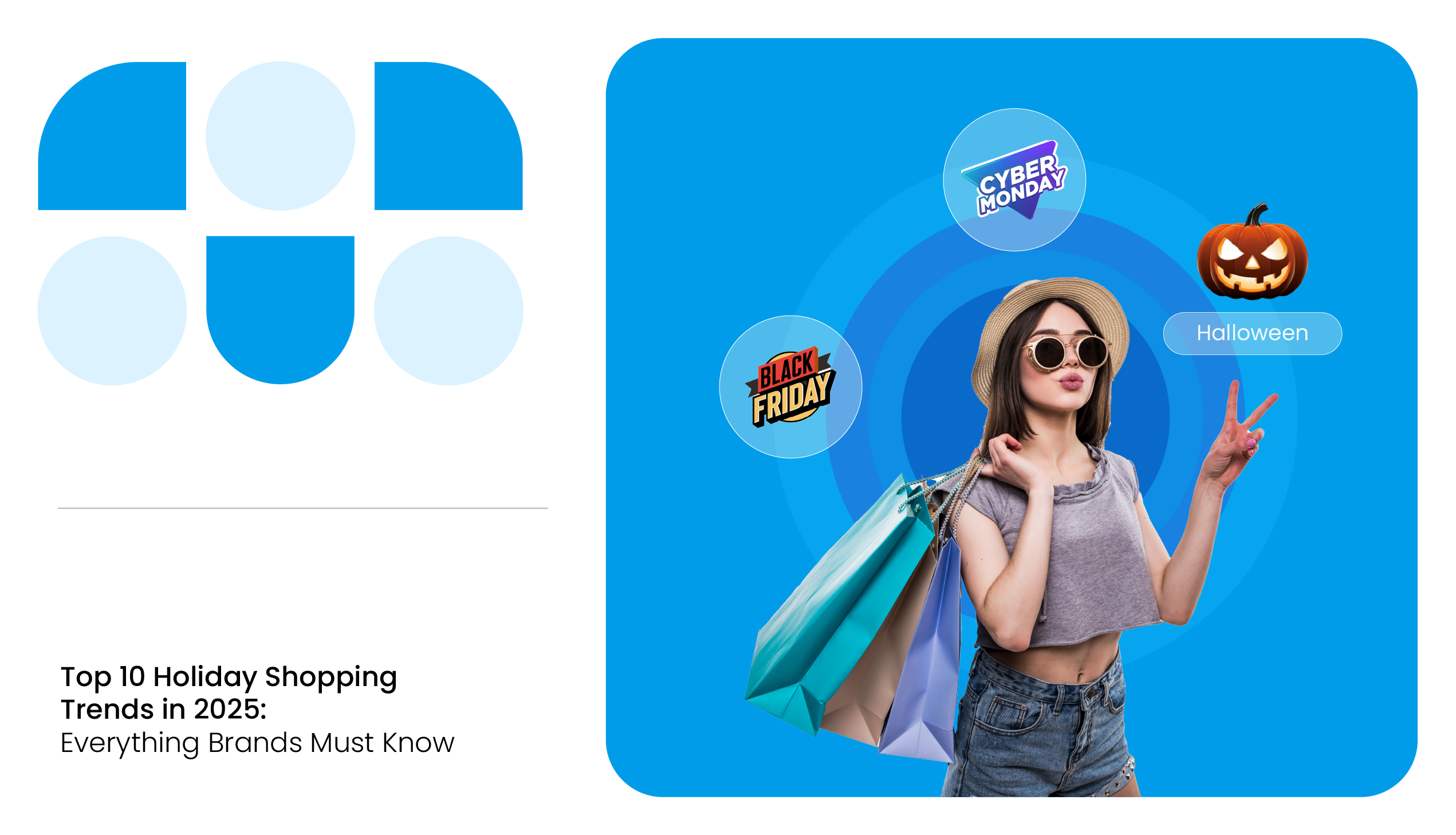If you’re selling online and think your current playbook will carry you through 2025, it’s time to wake up and smell the coffee!
The brands dominating the online shelf space aren’t just selling products. They’re leveraging trends that shape the future of Digital Shelf Analytics in e-commerce, turning data into decisions at lightning speed to stay ahead of the curve.
Let’s dive into the top 10 digital shelf analytics trends and explore how they’ll redefine the future of online retail.
Top 10 Upcoming Digital Shelf Analytics Trends

1. AI Integration And Automation
From marketing copies to supply chain management, AI in digital shelf analytics has become an integral building block for brand success. Brands leveraging AI in their operations have reportedly noticed improved efficiency and quicker decision-making.
By automating repetitive tasks like pricing adjustments and inventory management, AI allows teams to focus on strategy instead of manual operations. Advanced machine learning tools predict consumer behavior, optimize product placement, and even craft personalized recommendations.
Amazon’s AI-driven forecasting tools reduced overstock and stockouts by 30%, ensuring their shelves stay stocked with in-demand items. This operational efficiency translates into higher customer satisfaction and more sales.
What can AI in digital shelf analytics do for your business?
- Save Time and Resources: Automate tasks like pricing and forecasting, to free up valuable resources.
- Quick Data-Centric Decisions: Data-driven insights reduce errors and guesswork.
- Accurate Inventory Management: Manage thousands of SKUs without losing control.
2. Real-Time Analytics
Did you know that 62% of firms say real-time analytics has been a game-changer, enabling them to act on data before competitors can catch up?
E-commerce is dynamic, and real-time analytics empower brands to monitor trends, pricing, and performance as they happen. From spotting sales spikes and competitor price drops to automated price monitoring, real-time insights ensure swift and informed action.
Why is real-time analytics essential for your brand’s e-commerce growth?
- Instant Adjustments: React to competitor moves or market changes within minutes.
- Improved Customer Experience: Maintain consistent product availability and accurate pricing.
- Future-Proofing: Stay ahead by spotting and leveraging trends early.
With MetricsCart, get real-time insights with custom alerts for automated price monitoring, content compliance, and ratings and reviews analysis to stay competitive.
3. Customer-Centric Commerce
Customer-centric commerce centralizes your business strategies around leveraging feedback and behavior data to align brand offerings with customer needs.
Digital shelf data insights about reviews, customer sentiment analysis, and purchase history can refine your product strategy and marketing.
Nike’s Customer Experience (CX) strategy uses customer reviews and social media feedback to inform product development and marketing campaigns, fostering long-term emotional connections and increasing the likelihood of repeat purchases.
Here’s how customer-centric brand strategies can fuel long-term growth:
- Increased Customer Loyalty: Valuing customer inputs improves customer retention.
- Higher Conversions: Aligning offerings with customer desires leads to clicks that convert.
- Brand Differentiation: Improves brand recognition by prioritizing customer satisfaction
READ MORE | Want to know more about how to use customer feedback to boost brand growth? Check out our blog on A Guide to Voice of Customer Data Analytics in E-Commerce.
4. Multichannel Data Integration
It’s 2025; your customers are everywhere: Amazon, Walmart, Target, and even TikTok, so you must meet them where they are. But how do we monitor data from multiple channels on the digital shelf?
Multichannel data integration consolidates performance metrics from multiple platforms, giving brands a unified view of their digital shelf. A centralized dashboard helps businesses track inventory, orders, and performance across channels, saving time and reducing errors.
Why is multichannel data integration beneficial for your business?
- Unified Insights: Be it reviews or pricing across all platforms, get it all in a big picture.
- Operational Accuracy: Error-free inventory and order tracking for optimal operations.
- Enhanced Customer Experience: Deliver consistency across every channel.
With MetricsCart, you can access all your digital shelf data insights on a centralized dashboard. Track product performance, monitor pricing, ensure compliance, and optimize content across multiple platforms—all in real time.
5. Hyper-Personalization
Did you know that 81% of customers are more likely to purchase from brands that personalize their shopping experience? Customers are savvy; they know what they want, and they want brands to know it too, sometimes even before themselves!
If a customer browses for trekking shoes online, AI-powered personalization can proactively suggest trekking backpacks along with relevant travel accessories. It is like meeting your customer’s needs at a personal level.
That’s why hyper-personalization is a must for 2025. It uses AI and data analytics to tailor every interaction—ads, emails, product recommendations—to individual customer preferences, providing them with a VIP experience.
What can hyper-personalization do for your brand?
- Higher Engagement: Keep customers coming back with tailored content.
- Improved ROI: Focus retail media ad resources on what resonates most.
- Stronger Relationships: Build trust by showing customers you understand their needs.

6. Voice Search Optimization
Reportedly, the number of voice search users will reach 154 million in 2025. As people increasingly rely on virtual assistants like Siri, Alexa, and Google Assistant, voice search is redefining how customers find products.
Unlike traditional text searches, which are to-the-point and keyword-focused, voice searches are conversational. Voice Search Optimization (VSO) adapts to this shift, using Natural Language Processing (NLP), increasing accuracy and convenience. It aligns your product content with voice queries to improve product searchability and brand visibility.
When Nestlé optimized their recipe content for voice search, it led to increased engagement by 20% and 10% more organic traffic.
Why is VSO essential for your brand growth?
- Enhanced Discoverability: Show up in voice queries and boost visibility for local searches.
- Customer Convenience: Simplifies searches and makes the process mobile-friendly.
- Competitive Advantage: Voice search-optimized content stays ahead of the competition.
7. Augmented Reality (AR)
Out of shoppers who’ve used AR while browsing, 56% say AR encouraged them to make a purchase.
AR is no longer just a futuristic novelty; it is a key metric for scaling growth online. It lets customers visualize products in their space or on themselves before buying. Whether it’s trying on glasses or seeing how a couch fits in their living room, AR bridges the gap between online and in-person shopping.
How can Augmented Reality benefit your brand?
- Interactive Experiences: Immersive shopping with visualization and likelihood to purchase.
- Reduced Returns: Customers buy with confidence, reducing post-purchase issues.
- Competitive Edge: A significant USP to stand out in the online marketplace.
MetricsCart’s content compliance tools keep you updated on what’s missing in your enhanced brand content, ensuring your brand always stays state-of-the-art.
8. Social Commerce
Social media isn’t just for marketing anymore; it’s a sales channel. Platforms like Instagram, TikTok, and Facebook now allow brands to sell directly through shoppable posts and videos.
An analysis by EMarketer shows that 51% of Gen Z shoppers prefer discovering products on social media over traditional search engines.
From influencer marketing to live shopping events, social commerce enables you to convert views into sales for significant ROI. It also plays a major role in building a brand reputation online.
Here’s why social commerce relevance is a KPI for your brand growth:
- Expanded Reach: Improves visibility and engages audiences where they spend the most time.
- Online Brand Recognition: Expands brand footprint by staying relevant to trends.
- Better ROI: Optimizes ad spending with direct sales metrics from social platforms.
9. Sustainability Tracking
Insights from McKinsey’s State of the Consumer 2024 report reveal that in the US, sales of products with sustainability claims surpassed that of products without them.
Today’s consumers are aware of the environmental impact of their purchases, so they demand transparency. They seek brands that commit to ethical sourcing and eco-friendly delivery practices, such as carbon-neutral shipping and recyclable packaging.
In 2025, digital shelf analytics tools can help you track sustainability factors, from transparent sourcing practices to energy efficiency, eco-friendly shipping, and optimized inventory management.
Why is sustainability tracking a key factor for your business?
- Customer Trust: Aligning with ethical consumerism builds loyalty and brand credibility.
- Positive Brand Image: Stand out in saturated markets with eco-friendly practices.
- Long-Term Growth: Ethical practices foster sustainable profitability.
With MetricsCart’s live content compliance analyzer, make your listings compatible with sustainability tags. Know exactly where to add keywords that highlight your eco-friendly offerings and stand out amidst competitors.
10. Digital Shelf Data and Retail Media Integration
Retail media is growing rapidly. A report by EMarketer forecasts that the US retail media ad spending is going to be $62.25 billion by 2025.
But here’s the kicker: retail media efficiency isn’t just about running ads; it’s about running smarter ads. And your digital shelf data is the goose that lays the golden eggs for high-ROI retail media campaigns.
Digital shelf analytics provides brands with real-time insights into product performance, consumer behavior, and competitive dynamics. This data enables brands to tailor their retail media strategies to maximize impact.
How can you use digital shelf data for retail media ads?
- Identifying High-Impact SKUs: Pinpoint top-performing SKUs so ads can amplify their share of search for brand visibility.
- Optimizing Ad Placements: Use these insights to ensure your ads are placed where they’re most likely to be clicked and purchased.
- Enhancing Campaign ROI: Track digital marketing KPIs, such as click-through rates (CTR) and conversion rates.
Wrapping It Up
The future of digital shelf analytics is rooted in innovation, customer focus, and AI-centric tech integration. By adopting these DSA trends, brands can stay competitive, meet customer expectations, and drive long-term growth.
Ready to level up your e-commerce strategy? Get in touch right away because MetricsCart has the solutions to get you there.
Every Second Counts! Strengthen Your Business With Our Digital Shelf Solutions.
FAQs
It is the process of monitoring, analyzing, and optimizing how products perform and appear across online platforms. It includes tracking product visibility, pricing compliance, stock availability, and customer engagement, providing actionable insights to improve e-commerce success.
It automates data collection, identifies patterns, and provides predictive insights. It enables tasks like real-time pricing adjustments, demand forecasting, and content optimization, helping brands stay competitive and responsive to market dynamics.
By leveraging insights like top-performing SKUs and customer behavior, brands can create targeted, data-driven campaigns that maximize ROI and align ads with real-time product performance.
1. Identifying high-converting products for focused ad spend.
2. Refining keyword and placement strategies based on consumer behavior.
3. Providing metrics to optimize ad performance and boost ROI continuously.
Conversion rate, as it directly measures the effectiveness of campaigns in driving purchases, reflecting the success of ad spend and engagement strategies.







